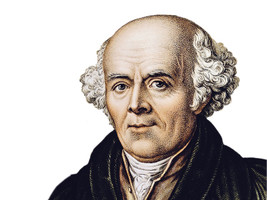The Story of How Homeopathy Was Discovered…
Posted by Dr. Lisa Samet N.D. on Mar 11th 2019
Homeopathy was first introduced to the world by the German physician Dr. Samuel Hahnemann (1755-1843). Dr. Hahnemann was not only brilliant, he was an experienced traditional physician and an accomplished chemist, mineralogist and botanist. He was also a translator of eight different languages.
Hahnemann graduated from medical school in 1779 and started a medical practice. Ordinary medicine at the time used therapies that included such things as purging, bloodletting, and the use of toxic chemicals. It was a system Hahnemann could not in good conscience practice long.
To support his family, he turned to translating medical texts. One of the texts he translated to German was William Cullen's Materia Medica. In Cullen’s work, Hahnemann saw references to South American tree-bark (cinchona) and its value in the treatment of patients with malaria. Hahnemann was puzzled by a reference in Cullen tying the therapeutic value of cinchona to its bitter, astringent properties. Hahnemann was well aware that there were many substances in nature with those qualities, leading him to seek a better explanation for cinchona’s therapeutic value.
Hahnemann proceeded to experiment with cinchona by ingesting some himself. What he discovered was the bark produced symptoms very much like symptoms of malaria, a disease he had contracted earlier in his life. This fact, and his vast knowledge of the medical literature dating back to Hippocrates led to his most important experiments – experiments testing the idea that, as Hippocrates had predicted, substances that can cause symptoms of disease can also cure ailments that express similar symptoms. Similia similibus curentur, the Latin phrase meaning "let likes be cured by likes," the primary principle of homeopathy – was Hahnemann’s lasting legacy to humankind.
He continued to develop and practice homeopathy and write extensively about the system until his death in 1843 at the age of 87.

